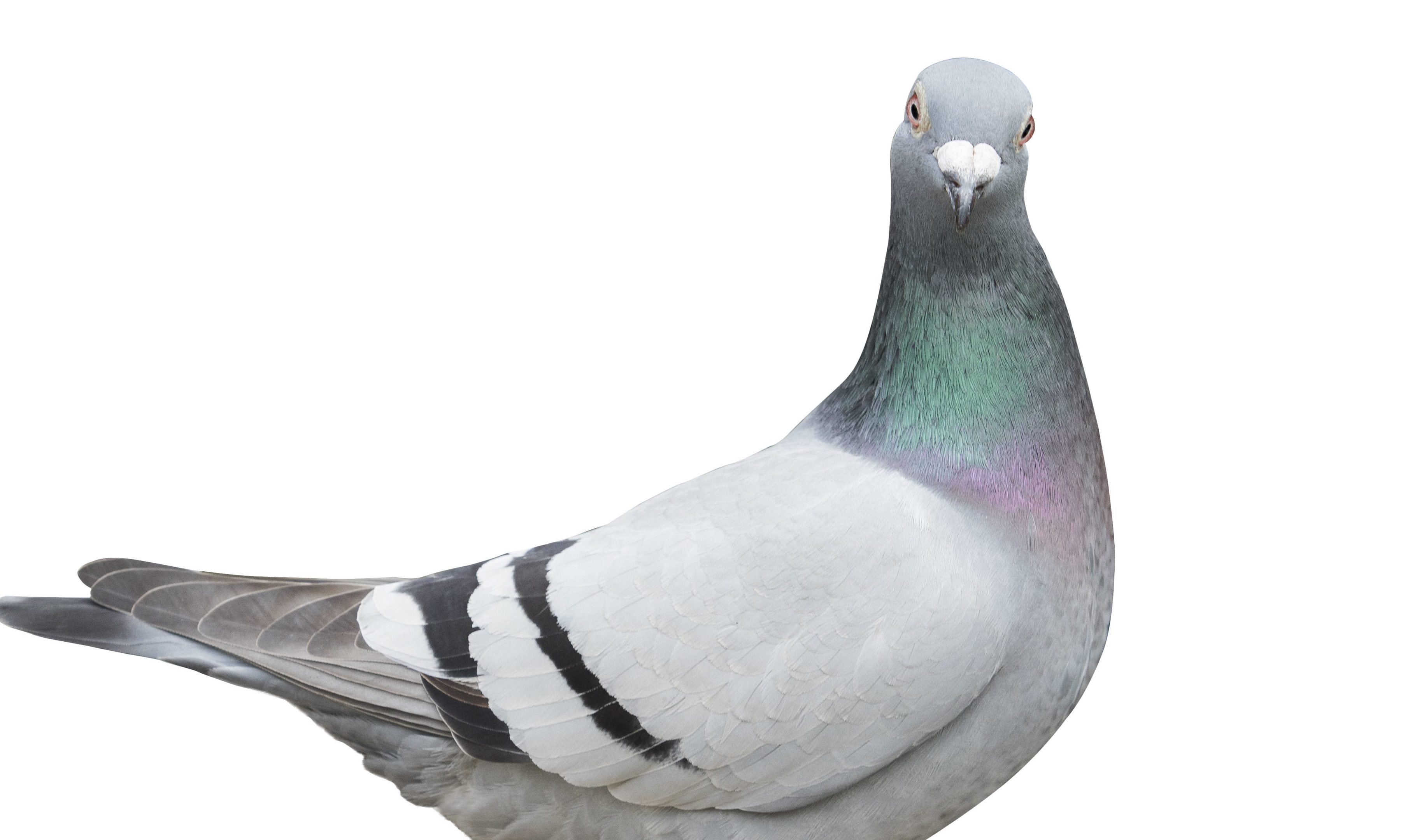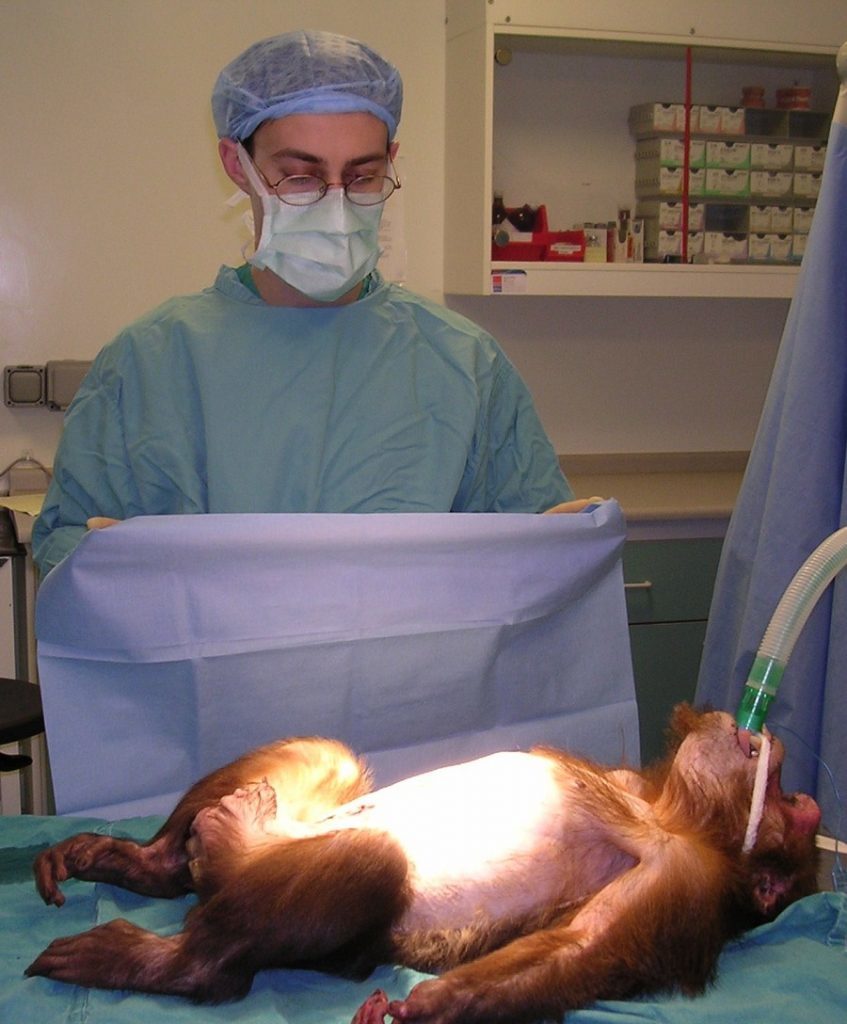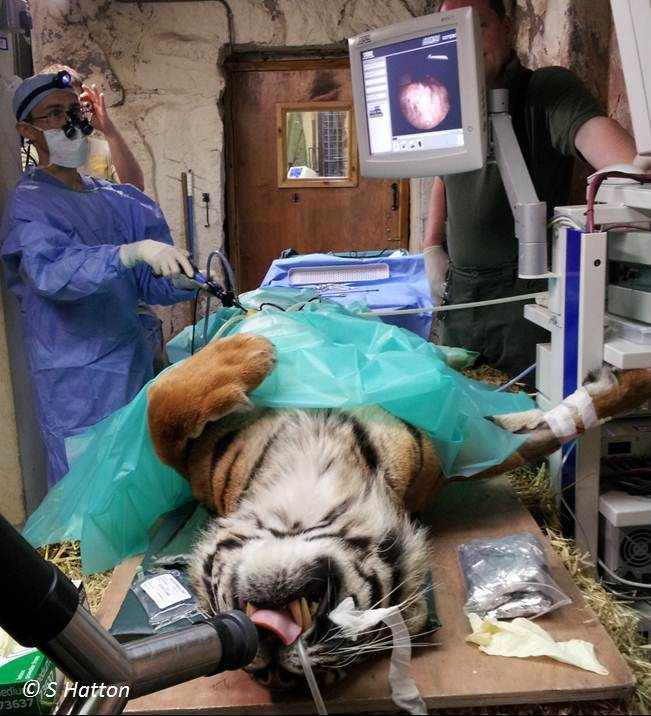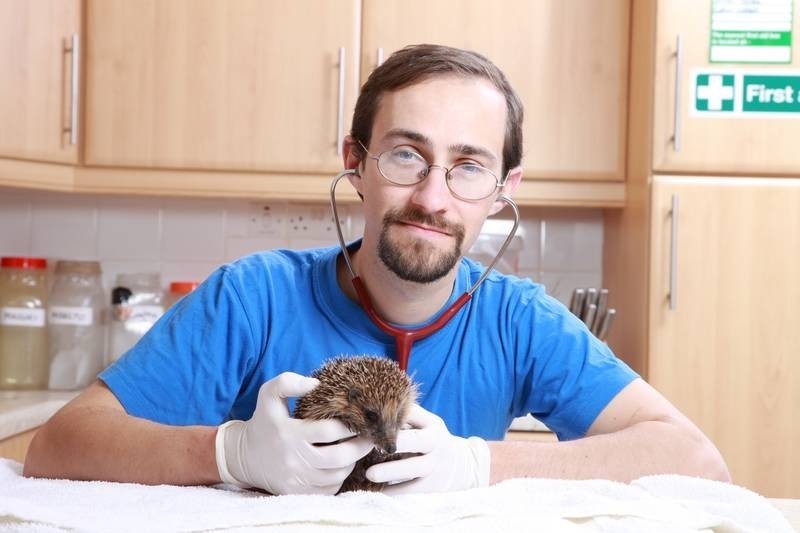
IN the hush of the operating theatre, vet Romain Pizzi is carefully closing a wound, painstakingly stitching his latest patient back together.
The talented surgeon from South Africa has travelled the world to treat exotic animals, from tarantulas to tigers.
But here in Scotland, this careful procedure isn’t being carried out on a rare bird of prey or colourful tropical species but a common pigeon.
Two days a week Romain can be found X-raying buzzards, examining hedgehogs and operating on foxes at the SSPCA’s National Wildlife Rescue Centre at Fishcross, near Alloa.
The biggest centre of kind in Scotland, it admits close to 10,000 native wild animal casualties from across Scotland every year – with that number steadily rising.
And while some people might think of foxes and pigeons as little more than pests, all animals are equal in Romain’s eyes.
In a small treatment room packed with equipment and medical supplies, a nurse monitors the pigeon’s vital signs.
Romain, 43, makes small, accurate stitches to bind the wound together while discussing a future trip he’s planning to fix an elephant’s broken leg in Sri Lanka.
He said: “It’s strange to have a conversation about elephants while patching up a pigeon.”
The vet, who also spends two days a week working for The Royal Zoological Society of Scotland at Edinburgh Zoo, added: “Some people might think working on tigers and elephants is more fun and prestigious but there’s a huge amount of wildlife in Scotland.
“It’s not very glamorous here but if you want to be busy it’s a good place.
“And you can make a difference to the animals whether it’s a tiger, orang-utan… or a pigeon.”
So far today, Romain has been administering to hedgehogs, checking over a young deer that caught its leg in a wire fence and X-rayed a buzzard that had been chased by crows into a window and was struggling to fly.
The rescue centre, run by manager Colin Seddon, was opened in 2012.
It was funded by £3.5m of public donations and boasts on-site veterinary facilities, seal, swan and otter pools, aviaries, wild mammal enclosures, paddocks and a stable block for deer.
The 15 full-time staff work tirelessly to care for a near-constant stream of wild animal casualties, which totalled 9359 in 2016 and 9456 so far this year.
Watch: 12 eight-week-old Edinburgh puppies get a visit from the PawSquad
With the pigeon quickly patched up, Romain grabs the kit required for his next patient.
He says the most challenging part of the job isn’t keeping up with the workload or performing tricky operations but doing so on a budget.
He said: “We have finite funding resources so it’s a little bit like the NHS. What’s the best we can do without more money?”
That could mean weighing up the likelihood of whether an animal could feasibly survive when returned to the wild – and whether it’s more humane to put the animal down.
While the centre is equipped with a lot of technology, including an X-ray machine, Romain has adopted a make-do-and-mend approach to sourcing other essential tools.
Much of the surgical tools and equipment he uses have been donated by hospitals or bought from eBay or auctions out of his own pocket.
Known for his innovation, Romain also pioneered the first “keyhole” surgical removals of diseased gallbladders in bears rescued from illegal bile farming in Vietnam.
He’s used the minimally invasive surgical procedure on hundreds of animals since, from ferrets and seal pups to pythons and jaguars.
“I’d had some frustrating cases and thought there must be a better way of doing things. This way causes the animals less pain and they recover quicker,” he said.
The species brought to the centre by both SSPCA staff and the public is constantly in flux.
At this time of year, mostly hedgehogs and seals require care.
Romain grabs his portable ultrasound machine – bought second-hand on eBay for a fraction of the cost – and heads to a separate building which is currently home to 50 grey and harbour seals.
On entering, the smell of fish smacks you in the face, followed by a cacophony of yelps, growls and barks.
We follow a corridor of water pens to meet a five-week harbour seal pup which the centre staff have named Bobbity. Romain explains that many of the seals they get in don’t require a vet.
They’ve been abandoned by their mothers and without milk, won’t put on enough weight and blubber to survive in the wild.
Later, in a room lined with cages, Romain examines a small hedgehog – one of 170 currently on site – that was found motionless in a garden. It is almost asleep because it’s so cold.
“If you see hedgehogs out in the day at this time of year it means they don’t have enough reserves to hibernate safely so they are trying to get extra food, otherwise they won’t survive winter,” said Romain.
“Because hedgehogs feel that the weather is still warm they think they have time to produce a second litter. That’s really a result of us messing with the climate.
“The reason this one is so small is because it was born late in the season.”
“People might ask why we treat these animals as it can often go against natural selection but we’re altering animals’ environment.
“The problem is that there’s very little real wilderness left in Scotland. As wildlife battle for space, they come into contact with man and are then at higher risk.
“Even heavily wooded areas are intersected with roads which hedgehogs can’t cross. That’s why their numbers are crashing.”
Despite the never-ending workload and limited funds, Romain is passionate about his work with the SSPCA.
“I’ve probably seen it all by now but I still find the job very fulfilling,” he says.
“I think I’m very lucky I work for a welfare society and get to treat these animals.
“We can’t possibly fix every injured animal but what we’re here to do is prevent suffering.
“Each animal, whether it’s a sparrow or an eagle, has the same capacity to suffer.”
“If you have an animal that is injured and you can treat it and release it back to its natural habitat, that’s amazing.”

Enjoy the convenience of having The Sunday Post delivered as a digital ePaper straight to your smartphone, tablet or computer.
Subscribe for only £5.49 a month and enjoy all the benefits of the printed paper as a digital replica.
Subscribe

